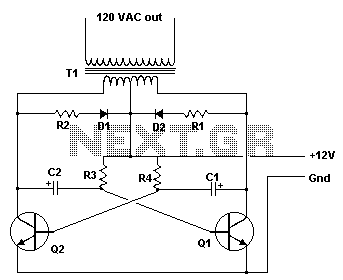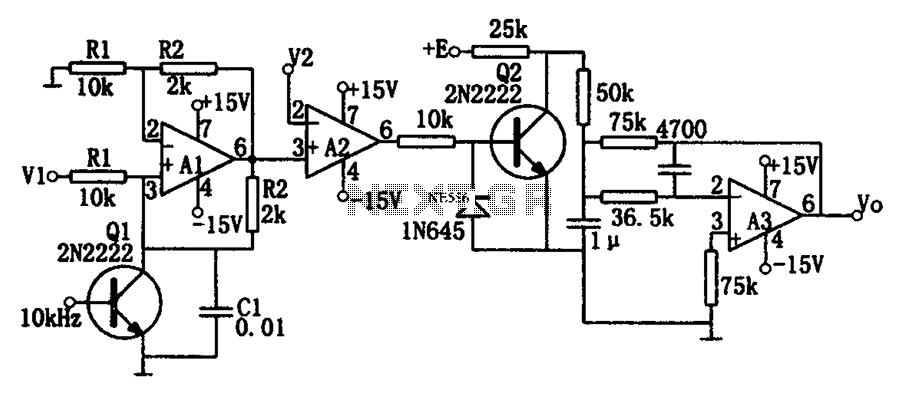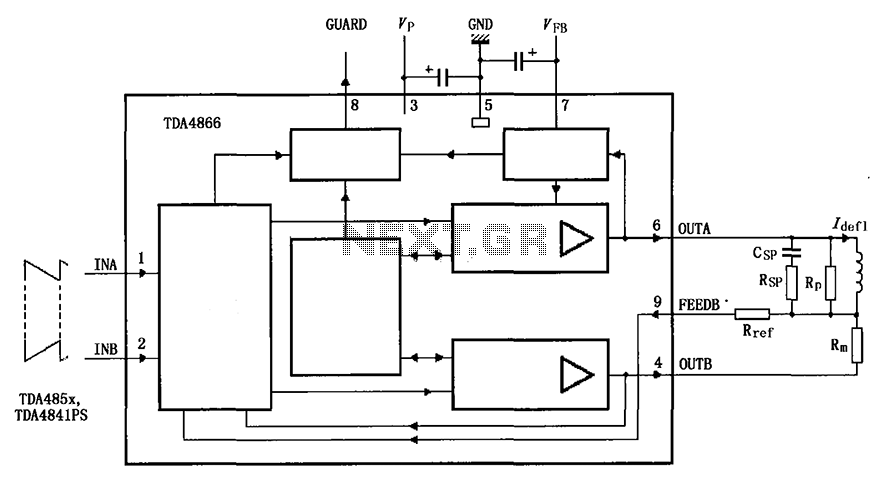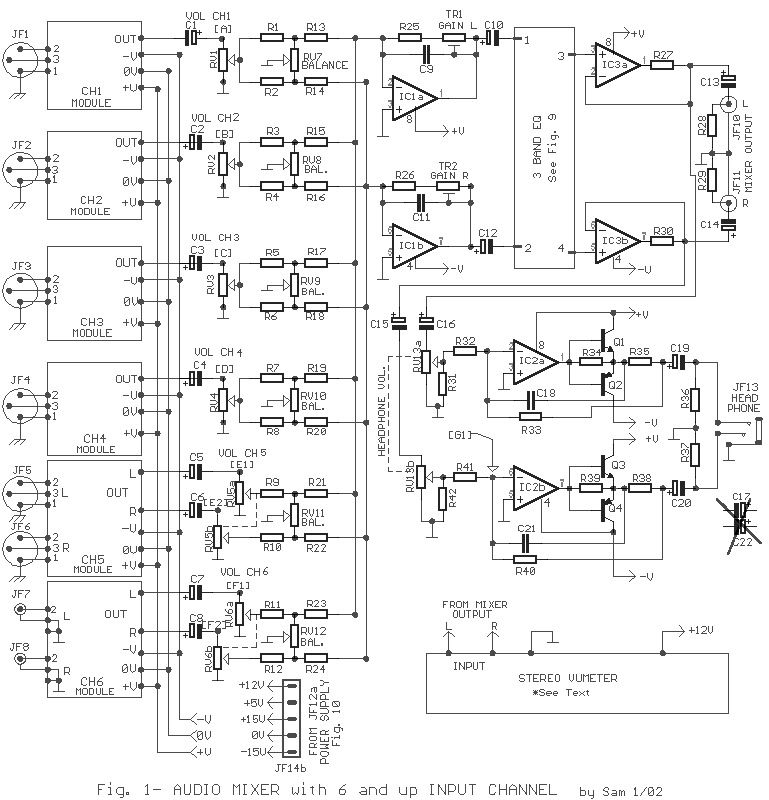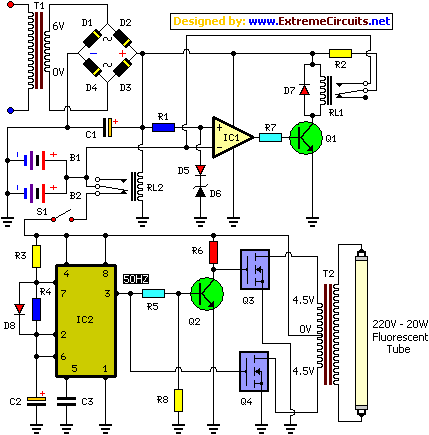
Tachometer circuit diagram of a multiplier
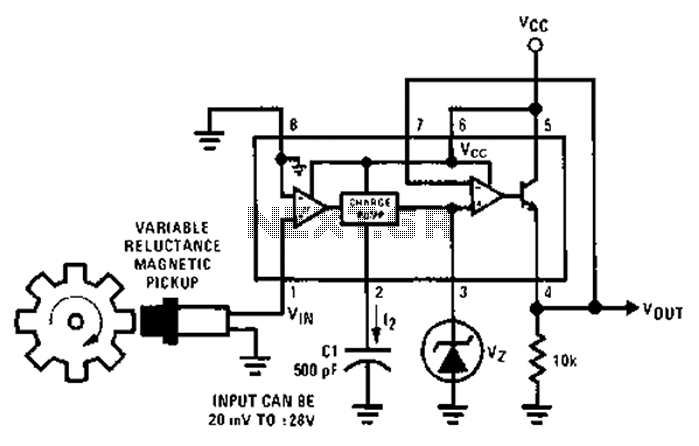
After each zero electromagnetic pickup receives a sine wave input, as illustrated in the National Semiconductor LM2907 circuit, it generates an output pulse. This circuit can be utilized in digital control systems. The width of each pulse corresponds to the capacitance of C1, and the power supply voltage influences the decision-making in the circuit. This circuit acts as a multiplier for microprocessor control system applications.
The National Semiconductor LM2907 is a versatile frequency-to-voltage converter that can be effectively employed in various digital control systems. When a sine wave input is applied to the zero electromagnetic pickup, the LM2907 processes this signal to produce a corresponding output pulse. The frequency of the input signal determines the pulse width, which is directly influenced by the capacitance value of capacitor C1 in the circuit.
In practical applications, the output pulse width can be adjusted by varying the capacitance of C1, allowing for fine-tuning of the circuit's response to different input frequencies. The power supply voltage applied to the circuit is also critical, as it affects the overall performance and stability of the LM2907. A stable power supply ensures that the output pulse remains consistent, which is essential for reliable operation in digital control systems.
Furthermore, this circuit serves as a multiplier for microprocessor control systems, enabling the integration of analog signals into digital processing environments. By converting the frequency of the input sine wave into a pulse width that can be read by a microprocessor, it allows for the implementation of complex control algorithms and feedback systems. This capability is particularly useful in applications such as motor control, signal processing, and automated systems where precise timing and control are required.
Overall, the LM2907 circuit's ability to generate output pulses based on sine wave inputs makes it a valuable component for engineers designing advanced electronic control systems.After each zero electromagnetic pickup has a sine wave input, as shown in the National Semiconductor LM2907 circuit will produce an output pulse, the circuit can be used for di gital control system in. Width of each pulse is a C1 size and the power supply voltage used in the decision. Circuit is a multiplier for the microprocessor control system services.
The National Semiconductor LM2907 is a versatile frequency-to-voltage converter that can be effectively employed in various digital control systems. When a sine wave input is applied to the zero electromagnetic pickup, the LM2907 processes this signal to produce a corresponding output pulse. The frequency of the input signal determines the pulse width, which is directly influenced by the capacitance value of capacitor C1 in the circuit.
In practical applications, the output pulse width can be adjusted by varying the capacitance of C1, allowing for fine-tuning of the circuit's response to different input frequencies. The power supply voltage applied to the circuit is also critical, as it affects the overall performance and stability of the LM2907. A stable power supply ensures that the output pulse remains consistent, which is essential for reliable operation in digital control systems.
Furthermore, this circuit serves as a multiplier for microprocessor control systems, enabling the integration of analog signals into digital processing environments. By converting the frequency of the input sine wave into a pulse width that can be read by a microprocessor, it allows for the implementation of complex control algorithms and feedback systems. This capability is particularly useful in applications such as motor control, signal processing, and automated systems where precise timing and control are required.
Overall, the LM2907 circuit's ability to generate output pulses based on sine wave inputs makes it a valuable component for engineers designing advanced electronic control systems.After each zero electromagnetic pickup has a sine wave input, as shown in the National Semiconductor LM2907 circuit will produce an output pulse, the circuit can be used for di gital control system in. Width of each pulse is a C1 size and the power supply voltage used in the decision. Circuit is a multiplier for the microprocessor control system services.
